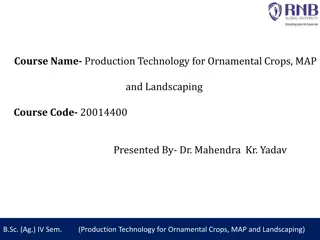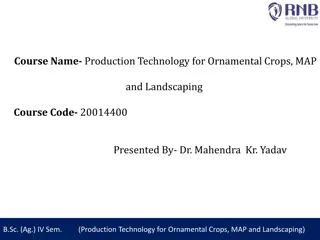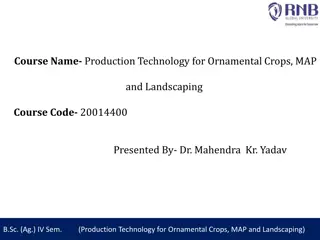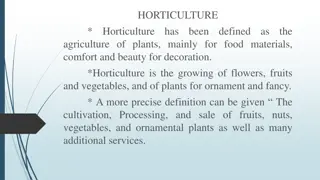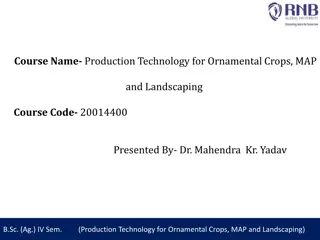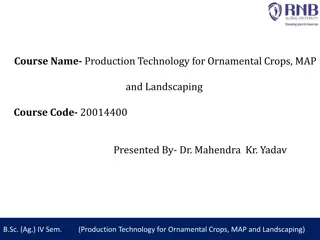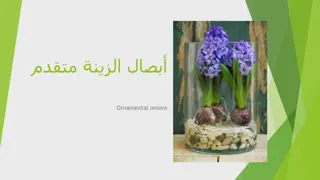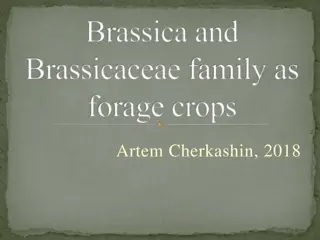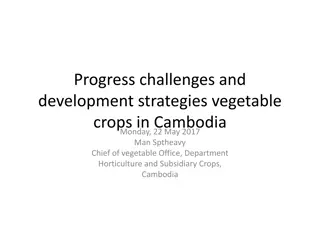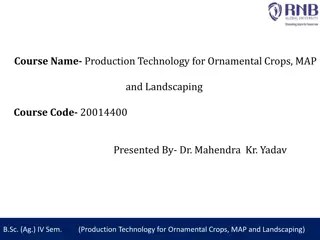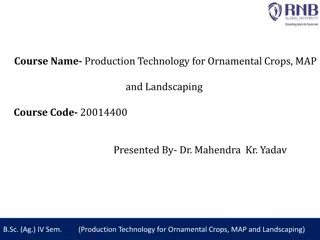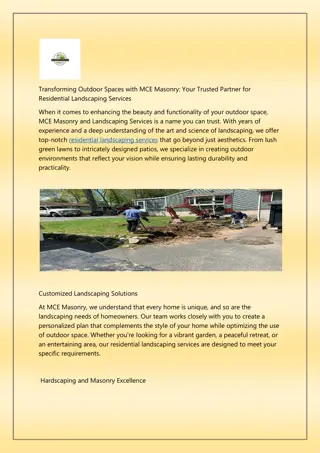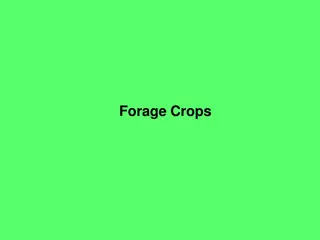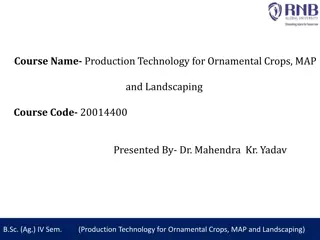Production Technology for Ornamental Crops, MAP, and Landscaping Overview
This course covers the production technology for ornamental crops, medicinal and aromatic plants, and landscaping principles. It includes identifying different types of plants, cultivation practices, medicinal uses, and processing techniques. Specific focus is given to the production technology of asparagus, including its botanical information, medicinal properties, cultivation requirements, and varieties suitable for growth in different regions.
Download Presentation

Please find below an Image/Link to download the presentation.
The content on the website is provided AS IS for your information and personal use only. It may not be sold, licensed, or shared on other websites without obtaining consent from the author. Download presentation by click this link. If you encounter any issues during the download, it is possible that the publisher has removed the file from their server.
E N D
Presentation Transcript
Course Name- Production Technology for Ornamental Crops, MAP and Landscaping Course Code- 20014400 Presented By- Dr. Mahendra Kr. Yadav B.Sc. (Ag.) IV Sem. (Production Technology for Ornamental Crops, MAP and Landscaping)
Course Objectives Identify different types of ornamental and medicinal crops. Examine various principles of landscaping, uses of landscape trees, shrubs and climbers, production technology of important ornamental crops, etc. Determine about Demonstrate various Package of practices for loose flowers and their transportation, storage house and required condition for cut and loose flower. Construct about the various problems with the production technology of medicinal and aromatic plants. Importance of Processing and value addition in ornamental crops and MAPs produce. B.Sc. (Ag.) IV Sem. (Production Technology for Ornamental Crops, MAP and Landscaping)
Production technology of asparagus B.Sc. (Ag.) IV Sem. (Production Technology for Ornamental Crops, MAP and Landscaping)
Production technology of asparagus Botanical Name : Asparagus officinalis Family : Asparagaceae Chromosome No. : 2n=20 Origin : Madagascar Plant Part use -Tuberous Root Medicinal use of Asparagus: Both the roots and the shoots can be used medicinally, 1. They have a restorative and cleansing effect on the bowels, kidneys and liver. 2. The plant is antispasmodic, aperient, cardiac, demulcent, diaphoretic, diuretic, sedative and tonic. The freshly expressed juice is used. 3. The root is diaphoretic, strongly diuretic and laxative. 4. An infusion is used in the treatment of jaundice and congestive torpor of the liver. B.Sc. (Ag.) IV Sem. (Production Technology for Ornamental Crops, MAP and Landscaping)
5. The strongly diuretic action of the roots make it useful in the treatment of a variety of urinary problems including cystitis. 6. It is also used in the treatment of cancer. 7. The roots are said to be able to lower blood pressure. 8. The roots are harvested in late spring, after the shoots have been cut as a food crop, and are dried for later use. 9. The seeds possess antibiotic activity. Another report says that the plant contains asparagusic acid which is nematocidal and is used in the treatment of schistosomiasis. B.Sc. (Ag.) IV Sem. (Production Technology for Ornamental Crops, MAP and Landscaping)
Soil: Plant usually grows in a variety of soils including medium black having optimum pH is 6.5-7.5. Climate: Asparagus is grown in temperate and sub-tropical regions. Mean day temperature of 25-30oC and 15-20oC at night are ideal. Varieties Marth Washington, Mary Washington, Jersey Gem, Jersey Giant and Greenwich produce superior yields in North Carolina. B.Sc. (Ag.) IV Sem. (Production Technology for Ornamental Crops, MAP and Landscaping)
Method of Propagation: Seeds, Division Seed rate Asparagus can be propagated through seeds, seedlings and crowns but most commonly followed practice is through seeds only. It requires about 3-4 kg seed for cultivation in one hectare. LAND PREPARATION The soil is given 20-30 cm deep ploughing followed by 2-3 harrowings after few days. Grasses and weeds are removed. The land is properly levelled and 40-45 cms broad ridges are prepared for plantation, leaving 15-20 cms furrow space as a channel for irrigation. B.Sc. (Ag.) IV Sem. (Production Technology for Ornamental Crops, MAP and Landscaping)
Planting Time: In hills : March-May In plains : July-November Spacing: Seeds should be placed 5 cm apart in the row, 2 to 2.5 cm deep. Spacing of 30 x 30 cm. Weeding: Two weeding's are carried out during the rainy months, thereafter one in next 2-3 months. B.Sc. (Ag.) IV Sem. (Production Technology for Ornamental Crops, MAP and Landscaping)
Manures and fertilizers Farm Yard Manure@150 to 250 quintals per hectare as basal dose. Basal: N 50 kg, P 10 kg and K 75 kg/ha. Irrigation Irrigation is given after the rainy season is over, at the rate of two irrigations in winter season and one per month in summer season. Adequate moisture should be maintained for good germination and early seedling growth. Do not let asparagus plants become dry while they are establishing a root system during the first two months. Water stress during this early stage can reduce yields. After the root system is established, irrigation is needed only during extreme drought. B.Sc. (Ag.) IV Sem. (Production Technology for Ornamental Crops, MAP and Landscaping)
Harvesting: The plant are harvested after 40 months in winter. The roots are dugout collected and cleared. The roots are peeled off with the help of sharp knife immediately after harvesting. It is observed that in case the roots are not peeled off within a few days, it is a bit difficult to remove the skin as such. In such a condition the roots are kept in boiling water for about 10 minutes, followed by cold-water treatment to facilitate peeling. After removing the skin, it is cut transversely into small pieces and dried in shade Yield : Estimate yield of 5-7 tons/hectare dry roots is reported Precaution may be taken for rodents and rats which occasionally eat tender shoots. B.Sc. (Ag.) IV Sem. (Production Technology for Ornamental Crops, MAP and Landscaping)







